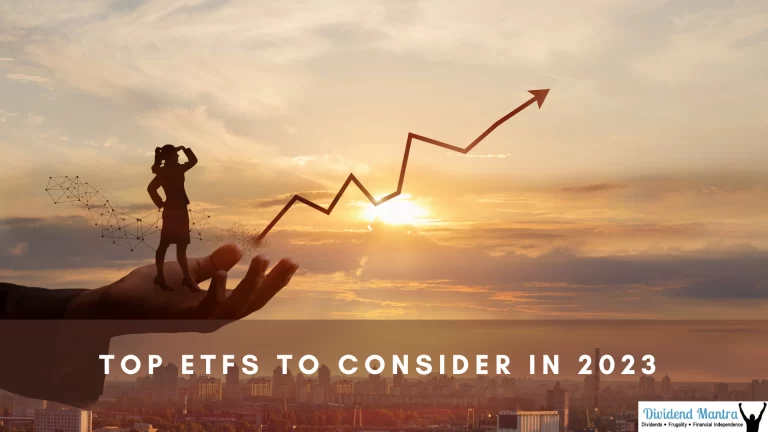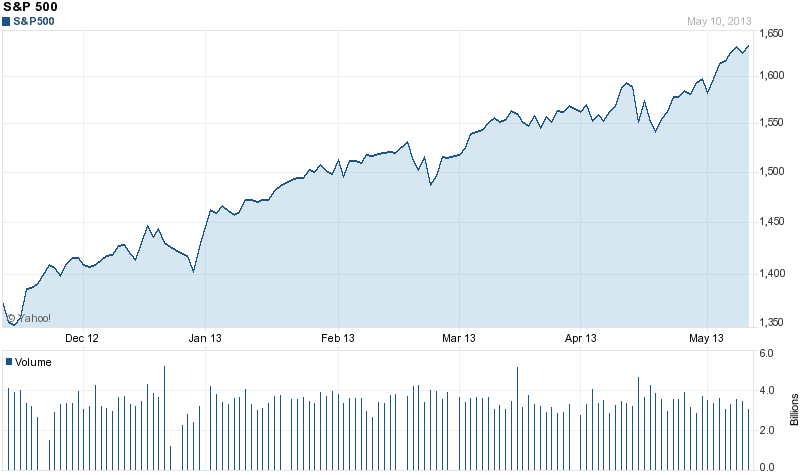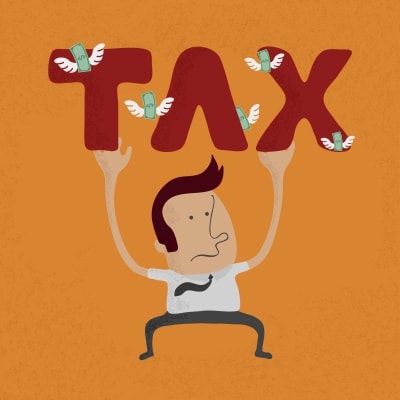Your Savings Rate Trumps Your Investment Returns
 |
| How Much Are You Saving? |
If you’re like me, and you’re seeking financial independence at a relatively young age, you’re looking for the most efficient and reliable way to the promised land. I’ve found that the best way to financial independence is to save large parts of my net income by living below my means, staying out of debt and investing said savings wisely. But, while “investing wisely” can be somewhat subjective, saving a large part of your income is not.
Investing In Dividend Growth Stocks
I choose to invest my savings into dividend growth stocks. I like to purchase shares of high quality businesses that have a long history of being efficiently run and returning value to shareholders. I like investing in businesses that provide society with needed services and products that people crave. These companies have “wide economic moats”, or strong defenses against competition. They usually have large distribution and supply networks, household brand names and pricing power which allows them to raise prices on their products or services over time. These increased prices drop down to the bottom line and allow these businesses to raise dividends over time. I also like to invest in these companies at attractive prices, which provide me a margin of safety against market downturns.
Savings Rate Vs. Investment Returns
This is all well and good. Investing your hard-earned money in high quality companies that pay rising dividends at attractive prices is a surefire way to success. But, as much as I consider myself an astute investor, the most important consideration to your journey to financial independence should be your savings rate first, and your investment returns second. So, you need to be a saver first and an investor second.
There are three factors at play when you’re considering how much money you’ll have at a future date. Contributions, time and rate of return are the inputs you’re going to use when trying to figure out how long you’ll need to save, how much you’ll need to save and how long you’ll have to do it for. This article is targeted towards people who are interested in retiring at a relatively young age. For “normal” people looking to retire at 65 years of age or older, time can make up for any shortfalls in either contributions or rate of returns. But for individuals looking to seek complete financial independence before 45, time will not be such an overpowering force.
I’ve figured out that while I take my investments seriously, my savings rate will be a much more powerful ally than my investment returns due to the fact that I’m trying to become financially independent at such a young age (40).
Using Myself As An Example
Consider myself as an example. I started this journey at 28 years old, with about $5,000 in the bank to contribute towards investing. That makes my journey to retire at 40 a 12-year journey. To illustrate the power of savings, let’s consider two savings rates and two rate of returns for this 12-year journey. I average approximately $4,000 a month in income. I try to save at least 50% of my net income every month. So, if we assume a 50% savings rate we would assume monthly contributions to a dividend growth portfolio in the order of $2,000 per month.
First Example: Large Savings Rate, Low Return
The first calculation I performed involved starting with $5,000 and contributing $2,000 per month over a 12-year timeframe. I used a very conservative 5% rate of return, compounded monthly. A 5% rate of return is well below the average rate of return for the stock market as a whole. This example considered saving a large amount of money and contributing those savings regularly while getting a sub-par return on your money. That example looks like this:
Initial Investment: $5,000
Regular Investments: $288,000
Total Interest: $111,266.40
Ending Value: $404,266.40
Hmm, not bad. A fairly conservative dividend growth portfolio worth over $400,000 should be able to throw off at least $14,000 (3.5%) per year in dividends while still providing capital gains as the underlying businesses continue to become more valuable. A portfolio of that size could just about cover 100% of my expenses as they stand today. But, what if I’m unable to save 50% of my income every month? What if due to decisions I made when I was much younger I’m only able to save 25% of my net income every month? That’s still much higher than the average American, right? And, maybe I’ll get really great returns on my money and make up for the lack of savings? I can dream…right?
Second Example: Low Savings Rate, Above Average Return
Let’s take a look at another example. Let’s double your rate of return this time. Yes, I’m going to double the return in this second example. So, we’re going to assume a 12-year 10% interest rate. This is slightly above the long-term stock market returns. The catch is that I’m going to halve the contributions and cap them at $1,000 per month. That’s 25% of a monthly net income of $4,000. We’ll still use the same 12-year assumptions. That example looks like this:
Initial Investment: $5,000
Regular Investments: $144,000
Total Interest: $146,259.77
Ending Value: $295,259.77
Well, that’s still a large chunk of change. However, it would be difficult to consider yourself financially independent unless your expenses are almost unbelievably low. And, if they are that low you will have likely been able to contribute more in regular investments all along. A portfolio of that size would throw off $10,300 (3.5%) per year in dividends. So in this example you got an above average return, but still fell woefully short of your goal after 12 years. You can see the vast difference in portfolio sizes and yearly dividends between these two expenses. So, while getting an above average return on your money is certainly wonderful, increasing your savings rate is paramount.
Third Example: Low Savings Rate, Outstanding Return
Let’s consider a third example, just for fun. This time I’ll triple your rate of return from the first example. We’ll assume a full 15% interest rate on the portfolio over a whole 12-year period. This would be extremely difficult to attain, but let’s see how it turns out. We’ll still consider regular contributions of $1,000 per month, for a 25% savings rate.That example looks like this:
Initial Investment: $5,000
Regular Investments: $144,000
Total Interest: $284,497.23
Ending Value: $433,497.23
This portfolio is the largest of the three. But, it took a full 15% interest rate over a 12 year period to attain. This might be pretty difficult to attain over such a long period of time. This portfolio barely beat the first portfolio, and it took an outsized investment rate of return to achieve.
Focus On What You Can Control
What is more repeatable and realistic: a 15% rate of return long-term or a large savings rate? For someone who is intent on financial freedom, you should be able to quickly realize that the power is in your hands with a savings rate, but large investment returns are not completely in your control. Large returns on your investment should be icing on the cake, but as one can see above a large savings rate, and hence large regular capital contributions, can easily overcome sub-par investment returns.
The best scenario one can hope for is large regular capital contributions through a large personal savings rate and a strong rate of return on your investments over a long period of time. What I try to do is maximize the things I can control. I try to save as much money as I can by performing the best I can at work to increase my earnings and reduce my expenses as far as I can. The larger the spread between income and expenses, the more I can contribute to my Freedom Fund. I can control when and how I invest, and so I try to find high quality businesses that reward loyal shareholders with rising dividends that are trading for attractive long-term prices.
I can’t control market forces. I can’t control what happens to the Euro. I don’t know who’s going to win the Presidency and I can’t predict where stocks are going to be 5 years from now. But, by maximizing my savings rate and making large regular contributions to my investments, I can overcome the things I can’t control.
How about you? Are you maximizing the things you can control?
Thanks for reading.
Source for calculations: InterestCalc
Photo Credit: FreeDigitalPhotos.net








Nice examples. We’ve been trying to adjust the savings rate, but being married with one child it’s a tough adjustment to make being set in our previous spendy ways. That said, we are trying, and have gone from 10-15% savings rate in 2011 to a 30% savings rate so far this year. Hopefully we can build up to 50%+ for 2013.
Nice post DM. I do agree with art though, having a family changes things. If I was single~I would live in a 4×8 solar-powered garden shed by a lake with a 98% savings rate (since I can get by with ramen noodles and rice)! But thats not the case.
I’m married with 2 kids. Since I’m the only income-earner, I really push to saving every penny I can to invest in my family’s future. Like you, I find investing in high-quality dividend paying companies is the way to go when it comes to stocks!
Savings rate is definitely a critical component to achieving financial independence. I would say, after eliminating/staying away from debt, that savings is the big variable that will ultimately determine the probability of success.
The nice thing is, only the first few years will be the hardest. That is, once you’ve built up a solid foundation, you can slowly, over time, let the compounding + dividend growth do the bulk of the work for you.
They always say building up the first 100k is the toughest. So, that’s why it’s even more important to have a consistently high savings rate from the get go. If you can keep that momentum going, and invest intelligently, you should be able to create an income stream that becomes an unstoppable force. At that point, you should have the luxury of being able to relax a bit on the savings rate, if desired.
On the other hand, even if you make a splendid investment, but do a lousy job of saving, you’ll be like the apple shareholder who got in at $80, but only bought 2 shares. That won’t take you very far at all.
Keep up the great work, you are well on your way to FI!
DM,
Great reminder of how important the savings rate is. We spend a lot of time focusing on how to optimize our investing decisions, but really it comes down to how much money we have to work with, which is directly related to how much we save.
Great post, DM. My own calculations have also revealed just how important savings rate is to building long-term wealth. I’ve actually considered writing an SA article that focuses on savings, using examples related to yours.
When you think about the income machines we’re creating with our dividend growth portfolios, it makes a lot of sense. There is only one external input to the machine: new capital from savings. (Reinvested dividends and realized capital gains are more like recycled output than new input.) If we want our machines to work better by changing the input, then the only course of action is to save more money for investment. The more we save, the more “fuel” there is for the machine to generate more dividends.
May our machines continue to run smoothly! 🙂
Great post DM. Very good comparison.
Art,
Having a child is wonderful.
The thing to keep in mind is perspective. You’re not racing anyone, but instead just trying to maximize your own potential. Besides, a 30% savings rate is well above the average and is double where you were. Keep up the great work!
Best wishes.
Investing Early,
Thanks for stopping by!
Having a family definitely changes things. But, it changes more than just one’s ability to save money. It changes your mindset and, possibly, your life goals. So you gotta roll with the punches.
The wonderful thing is that you’re the only income earner in your household, and yet you’re still being financially responsible and maximizing the potential for your family’s fiscal future. That’s great!
Best regards.
FI Fighter,
Great points.
I would agree with you. Eliminating/avoiding debt is critical. Imagine starting the race to financial freedom three miles behind the starting line. Not good!
I’ve heard that building up the first $100k is the most difficult. I agree with you that if you can get a head start by really saving hard for a few years and investing wisely, you can build a pretty big snowball right away and that thing will just continue to roll downhill and get larger and larger. I hope to hit that $100k snowball by the middle of next year.
Excellent example with the AAPL stock. Making fantastic investments with small bits of capital are unlikely to make you wealthy anytime soon. Double $100 and you’re still only sitting on $200. As they always say…it takes money to make money.
Best wishes!
The Stoic,
Thanks for stopping by.
While focusing on investing your money in high quality companies at attractive valuations is very important, maximizing your capital inputs is even more important. They’re both very large factors to your overall long-term financial success, but one should always strive to maximize both.
Take care!
DGM,
Thanks for stopping by. I’m glad you enjoyed the post.
I do hope you write that article on SA. I’d love to read it! I think your charts on your ‘Strategy’ page do an excellent job of reinforcing the points I made above.
I completely agree. The “dividend growth machine” can run quite a while on its own, but it probably won’t run to the best of its ability. Like a combustion engine, the only way to keep it running well over an indefinite period of time is to add fresh fuel to it.
Take care!
Anonymous,
Thanks! Glad you enjoyed it.
Stay in touch.
Best wishes!
Well said, DM.
You can make a lot of investing mistakes and still come up golden if you get the savings part right. Doesn’t work the other way ’round. 🙂
Agreed that a high savings rate is the way to go. It’s easier said than done though, especially over long periods of time. I find that a 40% savings rate is about all I can manage at my current income level without going insane. It has to be harder for those with kids and easier for those with high incomes.
I’m somewhat disappointed with my income but it’s my own fault. I made a lot of stupid decisions in my 20’s. Being deployed in a combat zone for 2 years is what really got me back on track financially. However It was quite the sacrifice as I will never get those years back. I’d rather run a 95% savings rate than go back to the Middle East. At least there are trees, girls, and stuff other than sand & camels in the U.S. My point is we were lucky to be born in an industrialized nation with a lot of freedom. We hit the jackpot in the U.S. You can still have a comfortable life while maintaining a super high savings rate. Don’t forget that or take it for granted! A lot of people in this world don’t have the luxury.
CI
Very nice post!
Maximizing your Creativity can earn you more income passive and active income. Learning how to program a few apps, websites, hardware controllers, games, toys, can give you paying royalties for many many months.
This is easier to accomplish when you have the freetime granted by Financial Independence.
Wealthier get Wealthier; and the overspenders and overborrowers go broke. (Game theory of Monopoly).
(I am still working on the website, lol, but it feels great to own some online real estate and learn. A simple wordpress blog connection might have to fill the gap for now.)
Your absolutely right. Except i hear it gets easier and cheaper to raise after the first kid, so have 16 kids!
Today everyone would freak out if a husband and wife wanted 16 kids.
But increasing your self-sufficiency reduces your need of $$ on essentials (though doesn’t reduce the needed essentials).
Spending $ on Extremely efficient tools and machines to save you time and get off the grid really helps now and long term in the future, compared to spending $ on luxuries.
Invest in knowledge, Invest in tools, Invest in skills, and Invest in 16 children, whom can learn to become self-sufficient while growing up, instead of just devouring luxuries like so many adults.
Very informative post!
For my part, this year, I investing 36% of my after tax income with only an after tax amount <$30,000, and I must say that’s already a certain drain.
I’ll put the same amount at worst, or about 40% at best, for 2013.
It’s a constant fight between to buy some things and to invest. Be a consumer make yourself guilty and be an investor is really addictive.
jlcollinsnh,
Absolutely, you nailed it on the head there.
Mistakes and bad luck will always come around, but if you can keep socking away capital you’ll likely be able to overcome these issues in short order and keep on moving forward.
Thanks for stopping by!
Take care.
CI,
Don’t beat yourself up too much. A 40% savings rate is awesome, and definitely something to be proud of. I talk all day long about frugality and concentrate on my savings rate and I’ve still only managed a 50% average this year.
Your income may not be as high as you could have had if you would have went into a different career, but the benefits can’t be beat. Housing is cheap and the health care is pretty solid too, from what I understand. You also get food and other benefits from what I know. So, the expense side for you is somewhat buffered by some of those benefits.
Again, a 40% rate is awesome. Keep up the great work.
Best wishes.
FYC,
I’m glad you enjoyed the post.
The wealthier do tend to become wealthier over time, while the poor are limited in class mobility. This is a function and direct effect of capitalism and personal factors, but it is what it is.
The key is to maximize the things in your control and keep your goals in front of you.
Best regards.
JF Baconnet,
Great job on the savings rate. 36-40% is wonderful.
I hear you on the constant battle on quality of life and trying to find balance between the now and the future. It’s something we all go through, but I’m extremely determined to retire before 40 years old and I’m willing to do what it takes to get there.
I think it’s just important to remember what matters to you. For a lot of people, living in the now is more important and that’s okay too. This is a big world full of people with different goals and motivations. As long as you’re happy, that’s all that really matters in the end.
Take care!
Prob your best post ever, excellent smart,sensible advice.
Geoff Nz
This post has done more to give me hope than all of my other research combined. I don’t understand the ins and outs of investing (yet), but I’m really good at putting away money towards a goal. We average about 25% of our combined income every year into the bank (so far, it’s gone towards other things like student loans, getting married, buffer vs. unemployment, etc). We can do better, and this year we might actually be able to start investing… and even if we can’t hit 8% return, it’s good to know it’s not in vain anyway.
Thanks for the post!
Geoff,
Thanks so much. I appreciate the compliment!
Glad you found it helpful.
Best regards!
Anonymous,
Glad you found the post and found it informational and inspirational.
Yeah, don’t worry too much about things you can’t control. Just stay focused on your long-term goals, save as much as possible while still enjoying your life and invest wisely. If you stay out of debt and make solid financial choices you’ll get to where you want to go.
Take care!
Excellent post DM! Here’s how I look at it – with investment returns I have little control (with the exception of CDs and other low risk investments), but with savings I have better control and I can plan accordingly.
Great post DM!
You made my list of the Monthly Blog Roundup for September.
moneycone,
Absolutely. That was one of the main points of the article; maximize the things you can control and success will follow.
Best wishes!
Kanwal,
Thanks so much for including me! I hope you’re having a great weekend.
Best regards.
This is a wonderful post. I would like to share my story because I could have retired at 45, but continued working until 57.
I purchased my first stock when I was twenty three. Had I been smart, I would have started at eighteen. Since I didn’t know anything about the stock market, I was told to buy what I know. I purchased three more stocks for a total of four companies.
And for the next thirty four years, I kept investing my savings and reinvesting the dividends in those four companies. And boy, did I love the stock splits!
By the time I reached forty five, I had more money invested in the stock market than I had earned working for a living.
I continued to work until fifty seven because that was the only way I could get my generous union retirement benefits. I did not want to leave any money left on the table when I retired.
I appreciated one of your readers’ comments about the tipping point. Yes, there comes a time when your companies go to work for you and begin to do the heavy lifting – compounding is a wonderful thing and stock positions add up awfully fast.
You don’t make any money in the stock market when you buy a stock. You don’t make any money in the stock market when you sell a stock. You make money in the stock market when you buy and hold a dividend paying company and let that company work for you.
Many “happy returns” to you and your readers.
The Quiet Millionaire,
Congratulations on your success. It sounds like you have many years of happiness ahead of you with which to enjoy your early retirement. Not only have you had success in the stock market, but you have a pension to supplement your investment income. Wonderful!
I would agree with you for the most part on your last point. While one can certainly make money on capital gains by buying and selling stocks, it’s hard to replicate success on an ongoing basis. What I instead do, is I look at every stock position for what it is — partial ownership in a publicly traded company. The perversion of this original purpose of stocks is what gets a lot of people in trouble.
I use stock investing in the classic way in which it was meant to be; an individual investors opportunity to buy a percentage of ownership in a wonderful company. By owning a piece of wonderful companies, I get to enjoy the spoils of such: dividends and rising market capitalizations. This effectively removes the stock market from my long-term success on the sell side, and Mr. Market then only impacts my buy price.
Stay in touch! I hope your retirement dreams come true.
Best wishes.